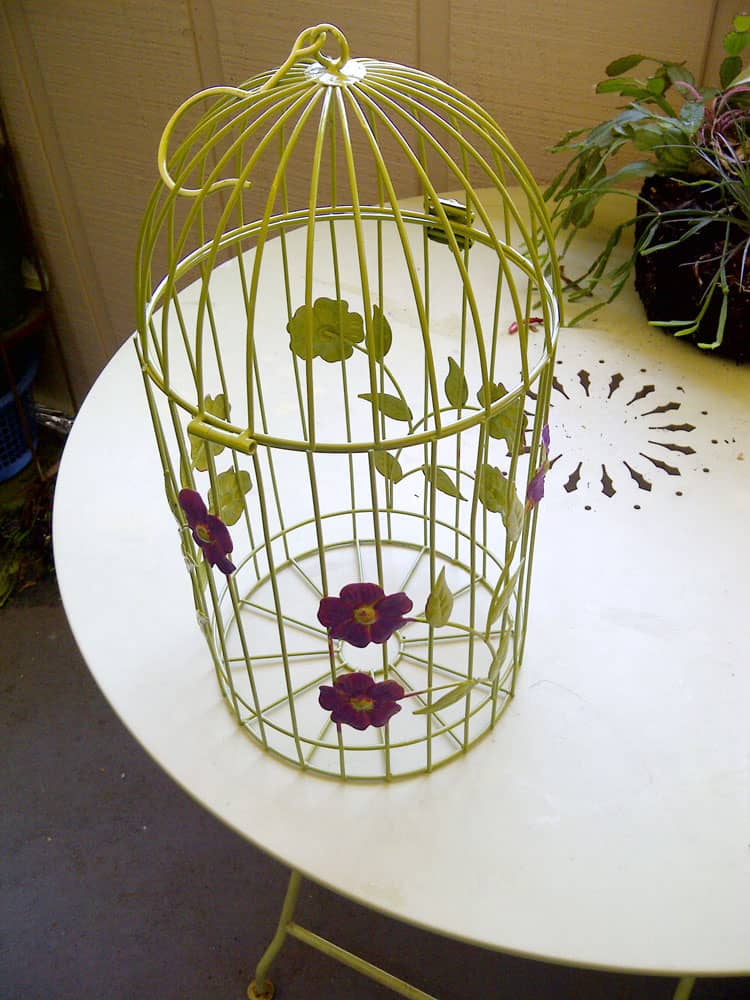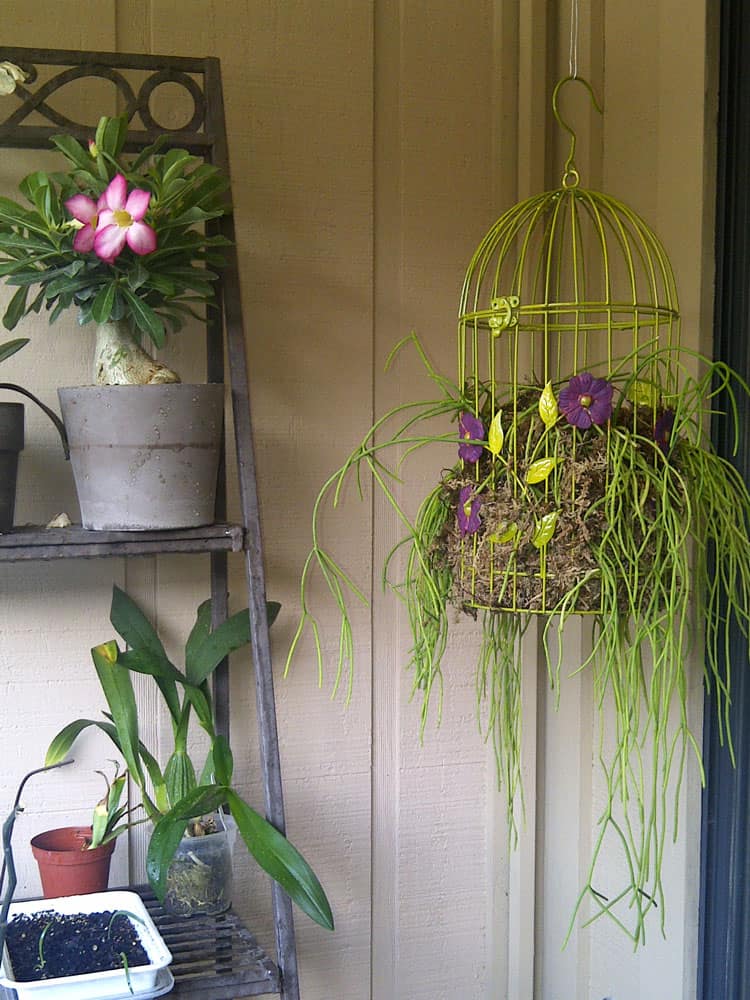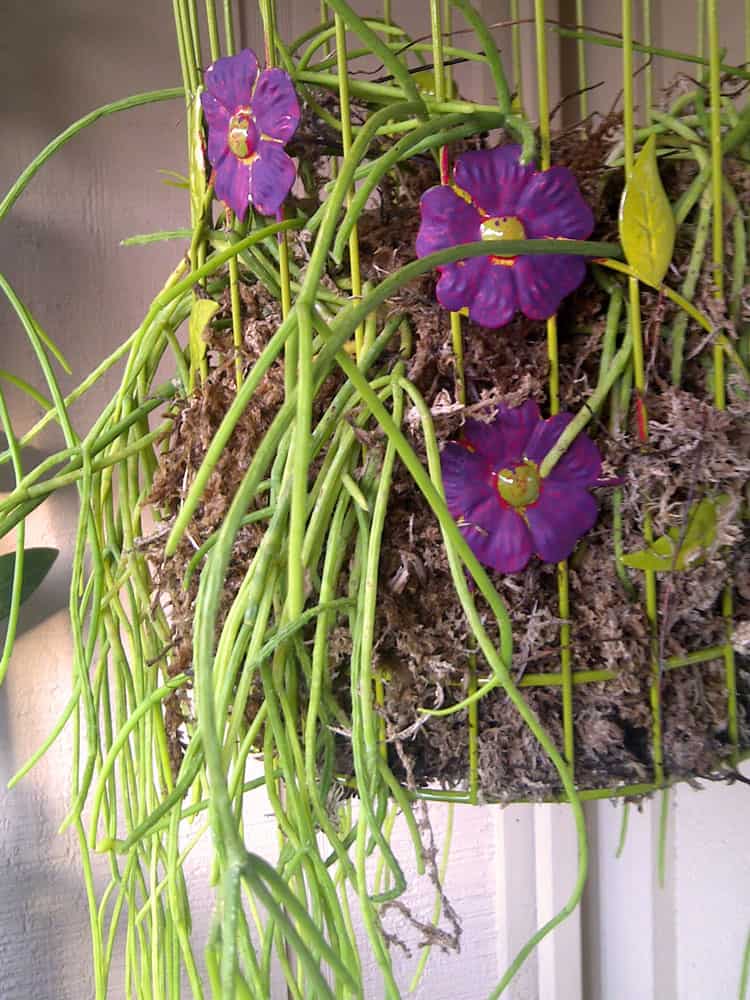My friend Steve Asbell is fast becoming one of my favorite garden writers. He has a quick wit, depth of knowledge, a heart of gold and is full of great ideas (what more do you want from your garden experts?). Today, he is sharing how he created a birdcage planter, which I think is a beautiful and creative way to make a simple or common plant a lot more interesting.
Handing it over to Steve:

The Making of a Birdcage Planter
Sure, the idea of having a pet bird is nice enough.
Mr. Tweets is loads of cuteness until you bring him home, and he mercilessly assaults your eardrums with migraine-inducing birdie obscenities and decorates the Sunday funnies and classifieds with his own monochromatic rendition of a Jackson Pollack painting.
While birds in cages are loud, messy, and saddening, plants are wonderfully silent and don’t tend to wake you up in the morning and drop dead overnight despite your dutiful visits to the vet.
It is at that point that you might ask yourself: “Why didn’t I just get a plant instead?” This hanging birdcage planter combines the best of both worlds with the whimsical appeal of a birdcage and the low-maintenance lushness of a houseplant

Growing Rhipsalis baccifera – Mistletoe Cactus
My birdcage planter is planted with mistletoe cactus (Rhipsalis baccifera), an epiphytic cactus available as a houseplant. You can use other plants if you’d like, but the effect of green chartreuse stems cascading out of a cage with chartreuse-painted bars is a nice one, and the Rhipsalis is also very easy to care for.
I water mine as little as once a week, but it’s also very tolerant of overwatering and more extreme drought. Oh, and when it comes to fertilizer, it eats like a bird, so to speak. If the green stems weren’t attractive enough, just wait until it bursts into bloom with little white flowers like snowflakes and finishes the show with round white berries! Once you see those delicate berries, the origin of the common name “mistletoe cactus” will become abundantly clear.
Planting up the Bird Cage
Planting my birdcage was easy; I simply laid down a bed of long-grain sphagnum moss (coir is a renewable alternative) along the bottom of the cage, took the Rhipsalis plant out of its container, and placed it on the bed of sphagnum. Afterward, I gently teased the stems through the bars so that they hang down freely. Lastly, some more sphagnum moss was tucked in along the sides. The stems will eventually root along the moss-like air-layered cuttings, providing an even fuller look. If you’re concerned about pouring water all over the place, just place another potted plant beneath your birdcage to catch the drainage.
If you do decide to try a more readily available plant, just make one adjustment to the above instructions: Leave the plant in its container! Mistletoe cactus benefits from having room for the roots to breathe, but most other plants would appreciate being left in the container for better moisture retention. If you’re at a loss for what other plants to use, try these ones on for size.

Alternate Plant Options for A Bird Cage Planter
Spider plants and golden pothos are classic hanging houseplants, and hardy trailing plants like creeping jenny and English ivy are perfect for leaving outdoors through winter in most hardiness zones. Succulents such as Sedum “Burrito” are appropriate if you have a hard time watering often enough. If you’re really looking for something interesting, go wild and try using orchids, bromeliads, tomatoes, strawberries… the possibilities are endless.
Where to find a birdcage?
Perhaps you’re eying your neighbor’s pet macaw and have started hatching up a scheme to evict Crackers from his home… he hasn’t paid rent in, like, forever anyway, and you’re really excited about planting your own hanging garden.
Leave the bird alone and check out craft stores like Michaels, Joanne’s, and Hobby Lobby for durable and decorative alternatives to a cage that’s probably unsanitary to begin with. If you have any questions email me at steve_asbell@yahoo.com or leave a comment over at my blog The Rainforest Garden!
Thank You!
– Steve
Steve’s blog: The Rainforest Garden
+comments+